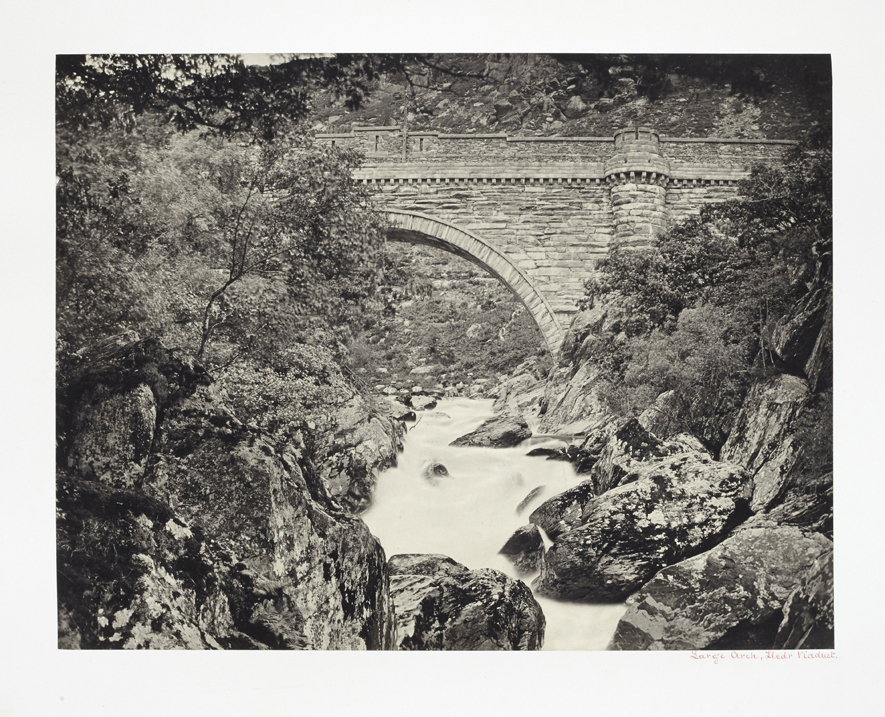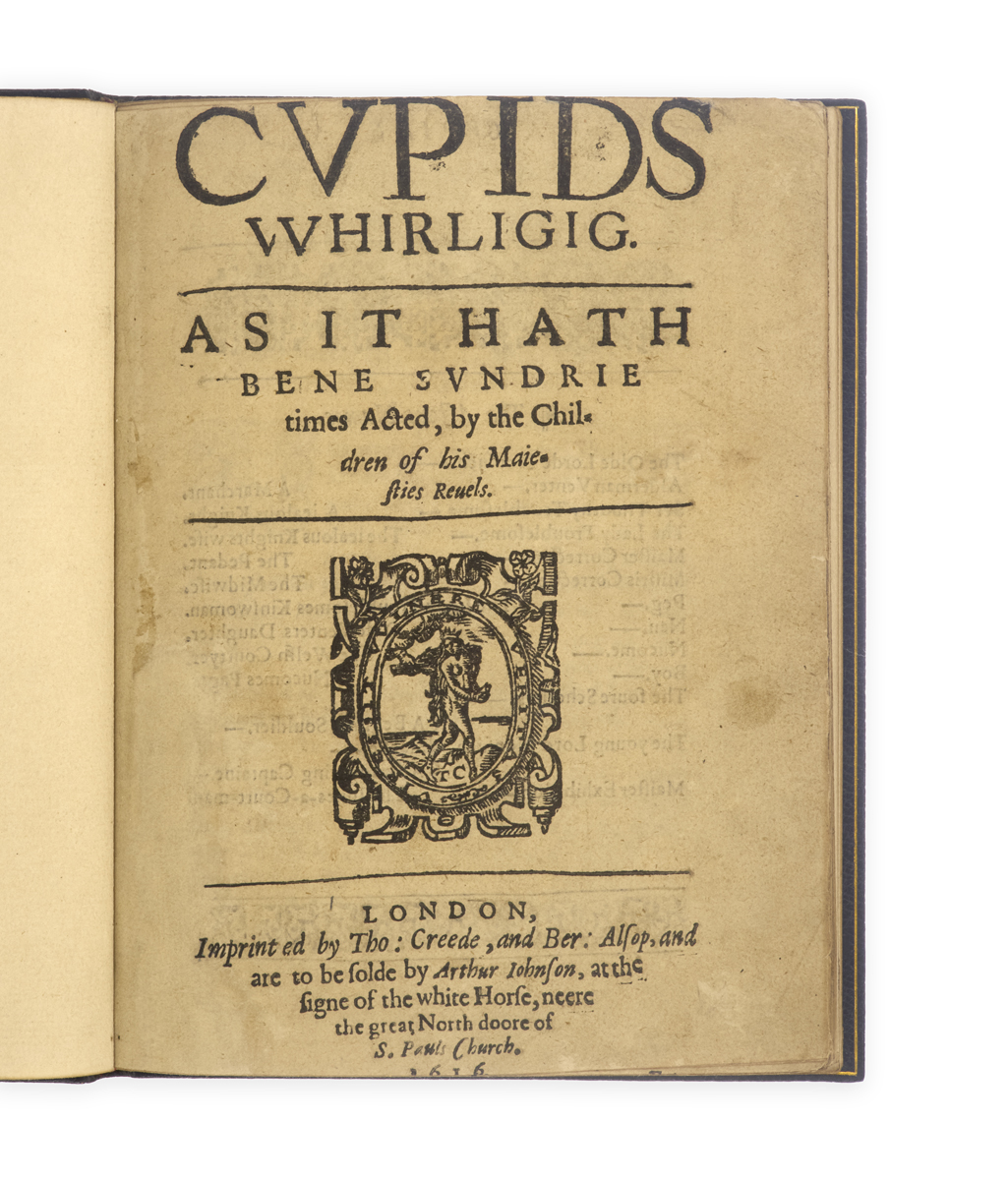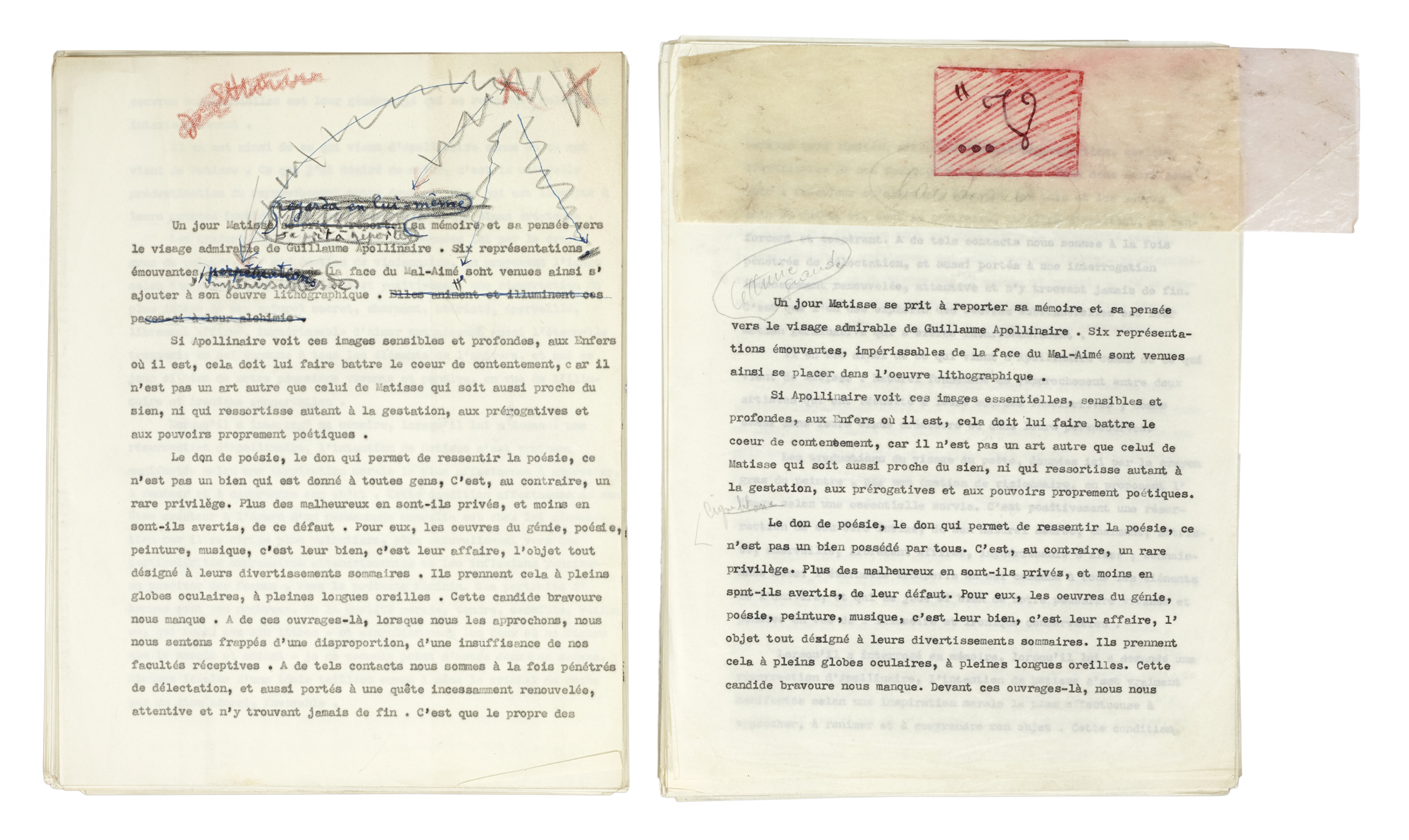
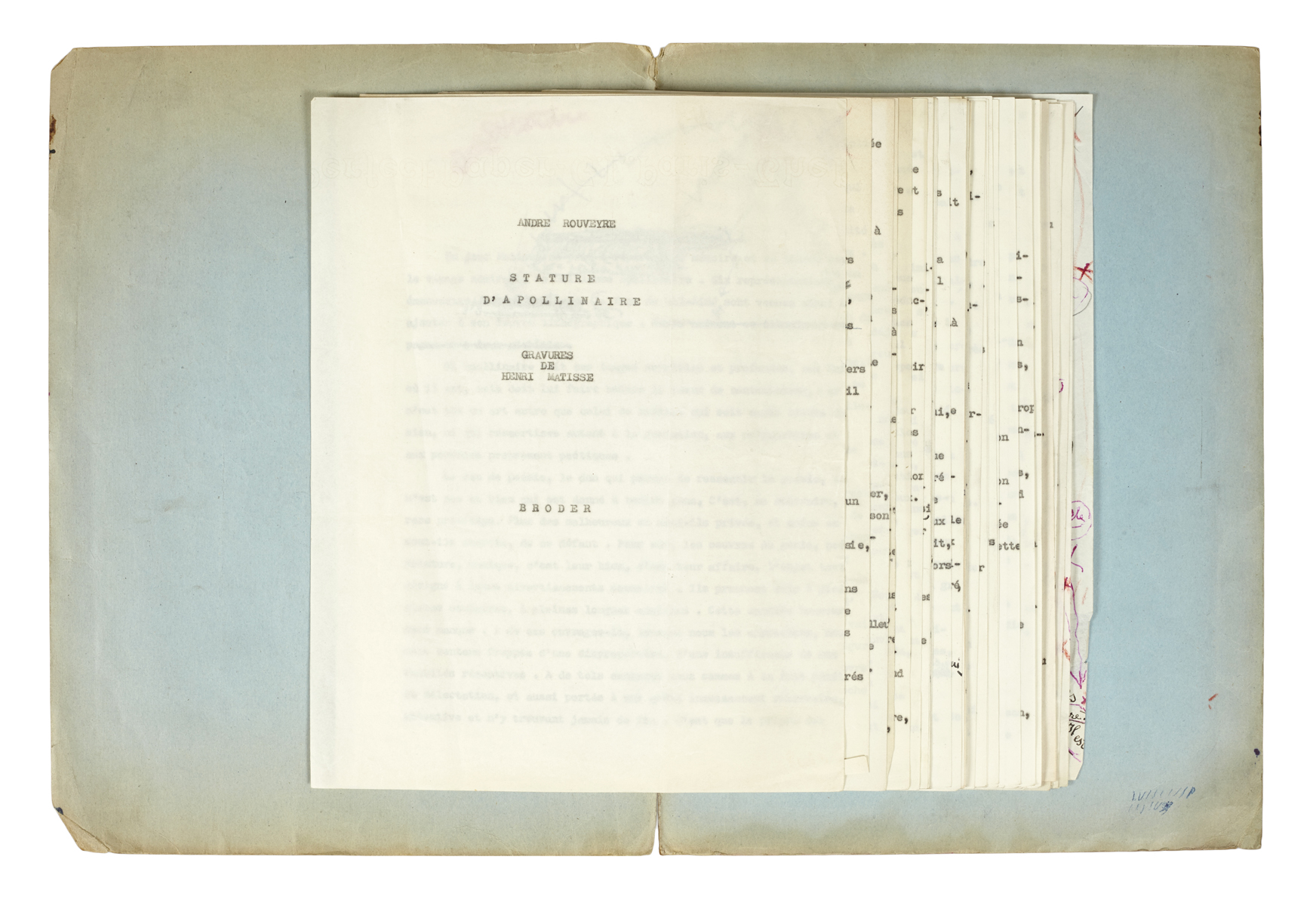
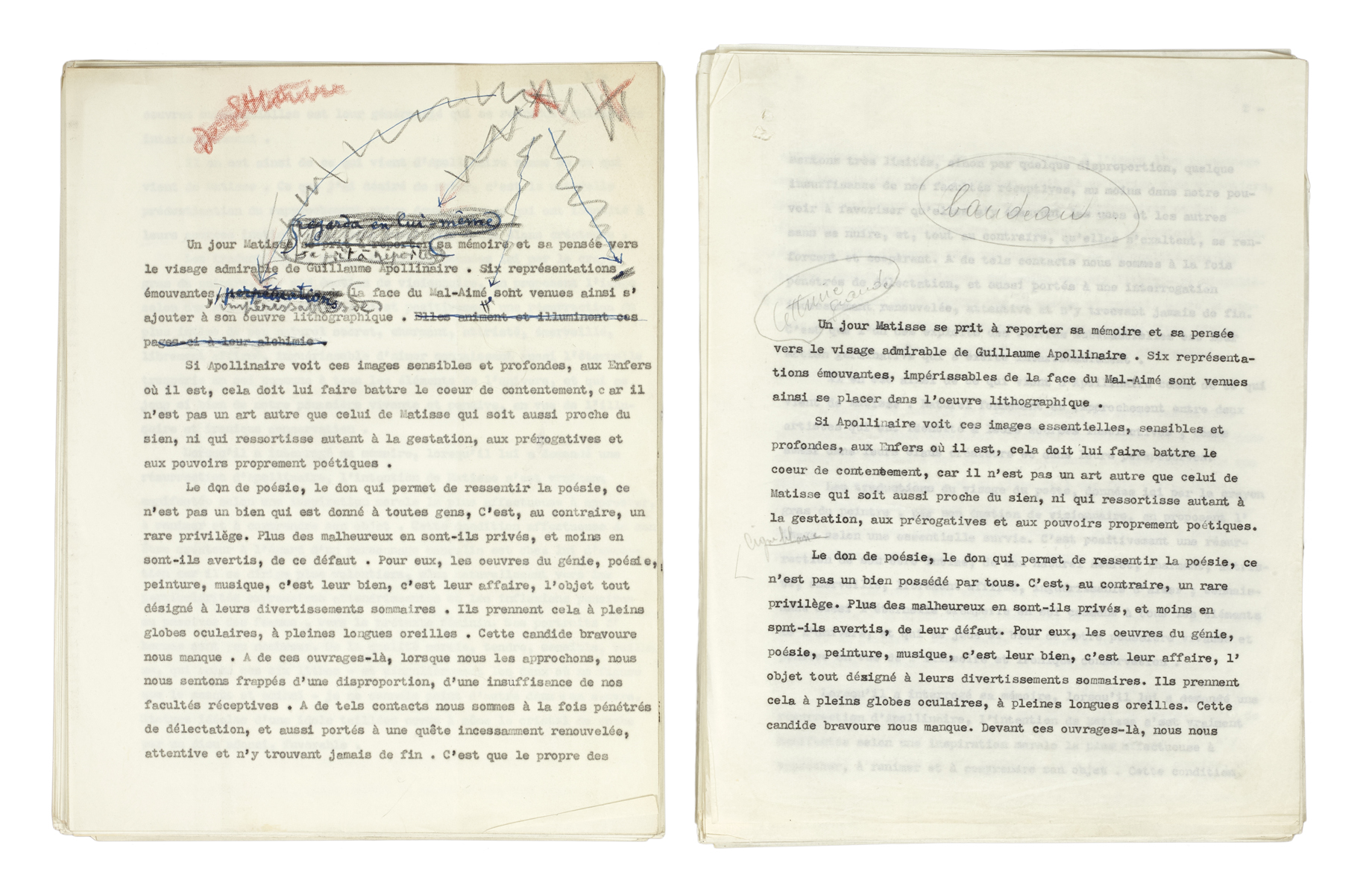
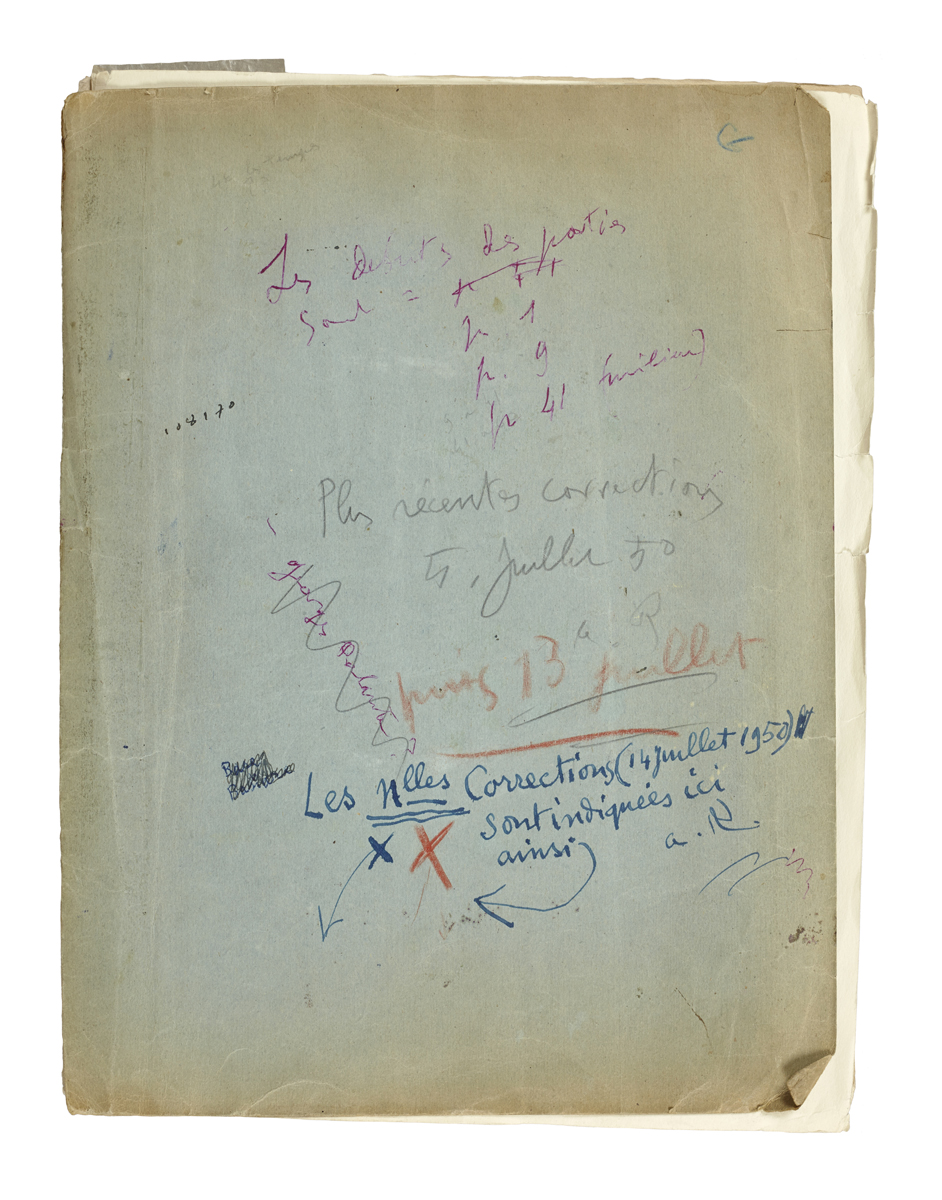
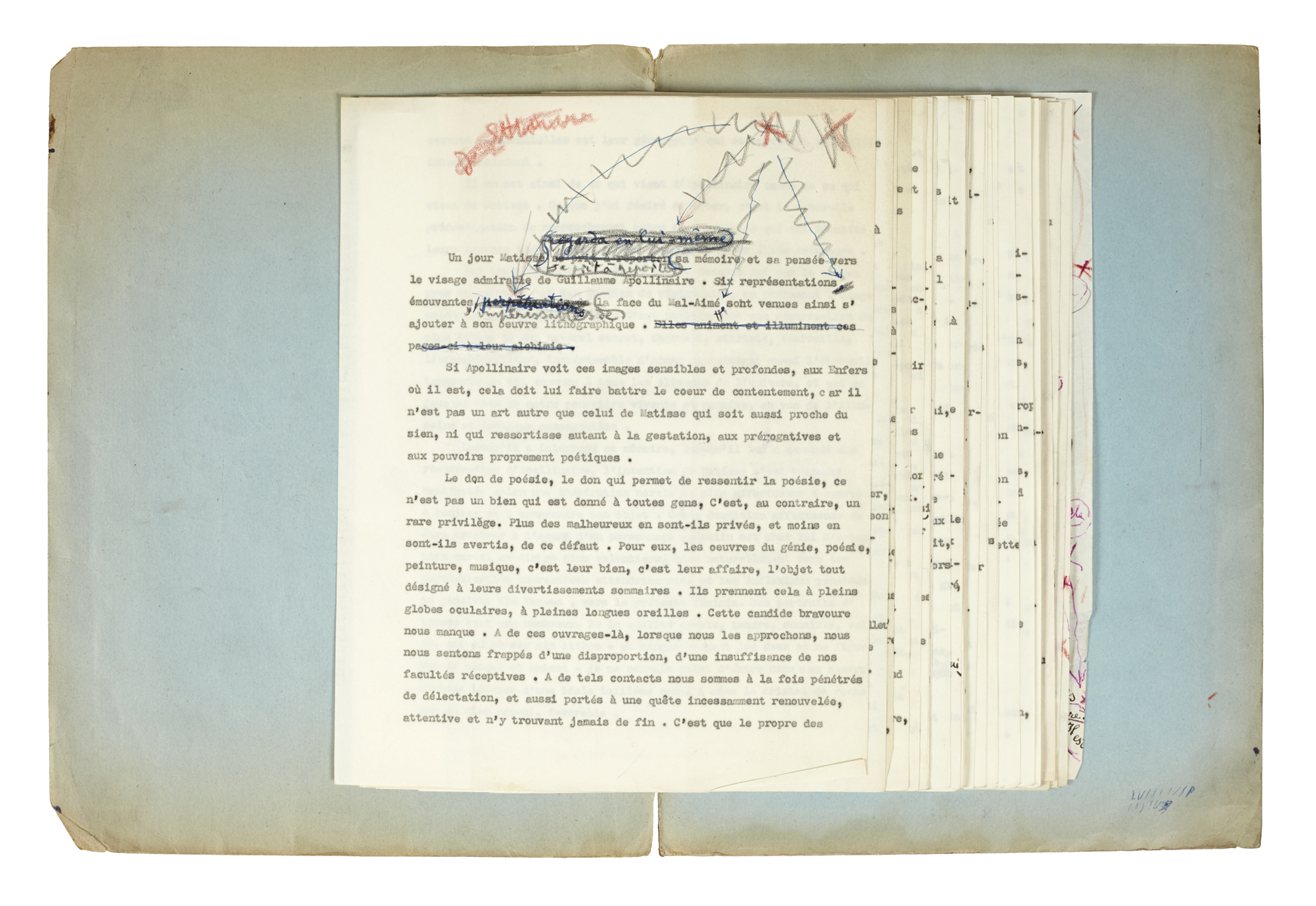
APOLLINAIRE, MATISSE AND ROUVEYRE
ROUVEYRE, André.
Two typescript drafts of Apollinaire (1952), here titled ‘Stature d’Apollinaire. Gravures de Henri Matisse’,
c. 1950.
Three 4to. typescripts. ff. [1], 62 with corrections in pencil and ink dated July 1950 (one printed addition tipped in); ff. [1], 68, [1], incorporating the earlier corrections and with further corrections and formatting notes; and ff. [9], comprising only the poetical extracts by Apollinaire; also with a loose design for an initial, a typescript leaf of ‘Calibrage’ dated 4 September 1950, explaining the proposed printing details, a sample printed bifolium of the first four pages of the work (in a variant text); and a corrected typescript leaf of promotional blurb for Apollinaire’s Ombre de mon Amour (1947); loose in two original annotated folders.
[Offered with:]

Added to your basket:
Two typescript drafts of Apollinaire (1952), here titled ‘Stature d’Apollinaire. Gravures de Henri Matisse’,
ROUVEYRE, André, and Henri MATISSE. Apollinaire. Paris, Raisons d’Etre, 1952 [1953].
Folio, pp. 86, [10], with two initial and two terminal blanks, a half-title, and a frontispiece, six lithograph plates, one lithograph tailpiece, and three linocut initials after designs by Matisse; bound preserving the original wrappers (also designed by Matisse) in black crushed morocco by Alix, panelled in yellow calf, matching slipcase.
The original corrected typescripts of André Rouveyre’s Apollinaire (1952), prepared in 1950 for submission to Louis Broder (though in the event Broder was not to publish the work); along with the first edition of the published text, #144 of 330 copies, illustrated by Matisse.
Twenty-three years after Apollinaire’s tragic early death in 1918, his mutual friends Rouveyre and Matisse, who had subsequently lost touch, crossed paths again and began an intense and rewarding friendship, exchanging some 1200 letters over the next decade or so, and collaborating on several publications including Rouveyre’s novel Repli (1947). In September 1948, Rouveyre proposed a collaboration in tribute to their old friend Apollinaire, with text by Rouveyre to accompany six of Matisse’s lithograph portraits of the poet. By early 1950 they had fixed on Louis Broder as the publisher and were discussing with him choices of paper, exchanging proofs, and debating the title.
The earlier of Rouveyre’s typescripts here shows three sets of corrections, coded by colour, and dated 5, 13 and 14 July 1950. The alterations are both typographic and substantive, ranging from word subsitutions to the insertion of several lengthy passages. Corrections are denser towards the end of the text, and Rouveyre seems to have struggled in particular with the closing paragraphs – several versions with very different content are provided then struck through, none which eventually appeared in print. The second typescript represents a firmer form of the text (though again the end differs from the work as printed), with scattered corrections and instructions as to the design of the text. Included loose is tracing paper sample of a decorative initial ‘U’ or ‘V’ in a similar style to those provided by Matisse.
The ‘Calibrage’, which describes this second typescript as the ‘manuscrit définitif’, proposes the illustrations comprise three large initials in red, three large headpieces and three tailpieces, and the six lithos; the print run would be 280, plus 20 hors commerce.
If Broder had issued the publication, it would have been one of his earliest – he went on to become a major publisher of artist books, working with Braque, Picasso, Miro, Eluard, Claudel etc. But there were inscreasing delays and financial conflicts during the summer of 1950, and by the autumn, even as the text was being set by Coulouma, Matisse and Rouveyre abandoned Broder as the publisher. In May 1951 they signed a new contract with Adda Gérard of ‘Raisons d’Être’, and printing was largely completed in April 1952, but the final product, with its screen-printed covers by Matisse, did not see the light until the following January.
See Matisse-Rouveyre: Correspondance (2001), passim.
